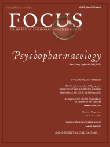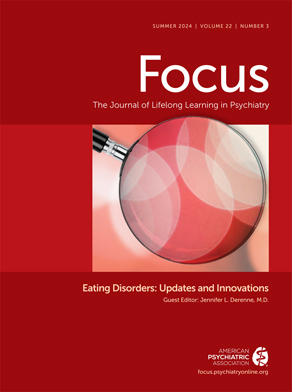Benzodiazepine receptor agonists
γ-Aminobutyric acid (GABA) is the predominant inhibitory neurotransmitter in the CNS. All approved hypnotic medications except ramelteon have their effects through impact on the GABAA receptor complex, typically at the benzodiazepine recognition site of this complex.
Two types of compounds approved for the treatment of insomnia are included within the BZRA category, with differentiation between them often made on somewhat artificial grounds. Agents with a classical benzodiazepine chemical structure are functionally BZRAs on the basis of their agonist properties at this receptor site. Five benzodiazepine hypnotic compounds are currently approved for use in the United States: flurazepam, quazepam, estazolam, temazepam, and triazolam. Quazepam and flurazepam have very long elimination half-lives of up to 120 hours. As a result, high plasma levels of these agents are maintained throughout the night. On the basis of these high levels, they are effective in promoting sleep over the night but have also been shown to lead to next-day cognitive and motor impairment as a consequence of residual sedation.
Estazolam and temazepam are often characterized as intermediate half-life agents. However, each has a half-life of greater than 8 hours and may promote residual sedation, especially at high doses or if taken without the opportunity to sleep for a full 8 hours.
Triazolam is a very effective and very potent hypnotic agent, with a relatively short half-life and short duration of action. It was widely used in the 1970s and 1980s, but during the late 1980s it was withdrawn from the market in several countries after questions were raised about its safety. It was associated with reported serious side effects, mostly psychological, usually occurring at high dosage levels. Triazolam remains available in the United States as a generic agent and has been used by many patients on a long-standing basis without toxicity or adverse reactions.
Benzodiazepine hypnotics have been demonstrated to be safe and effective in the treatment of insomnia but are restricted to short-term use. The recent State of the Science Conference observed that these agents have a higher frequency and severity of adverse effects than is seen with the BZRAs.
Several terms have been used to describe the most recently released hypnotic agents (zolpidem, zaleplon, and eszopiclone). The term “nonbenzodiazepine” has been used to describe these compounds, and this term is technically correct, because they do not have a benzodiazepine chemical structure, as do agents such as temazepam, flurazepam, and others.
However, these agents, like the benzodiazepines, promote sleep on the basis of their agonist effects at the benzodiazepine recognition site of the GABAA receptor complex. As such, they are functioning as BZRAs, and, thus, the acronym BZRA seems appropriate on the basis of the therapeutic effects of these agents.
Like the classic benzodiazepines, the BZRAs are classified as schedule IV agents by the Drug Enforcement Administration. This classification reflects an assessment of a low risk of abuse potential, and during their many years of widespread use in this country the BZRAs have demonstrated little to no actual risk of abuse, addiction, or diversion.
The three BZRA medications that have been available in this country in recent years have half-lives and durations of action ranging from short to intermediate. Zaleplon, with an extremely short half-life of about 1 hour, is effective for treatment of sleep initiation problems, and has the distinction of only requiring 4 hours after administration before normal activities can be resumed. However, probably because of its short half-life, zaleplon does not have the capacity to increase total sleep time or improve sleep maintenance.
Zolpidem, with a half-life of about 2.5 hours, has demonstrated efficacy in sleep promotion and the capacity to increase total sleep time. It has been extremely successful in the United States and global marketplace. Although it does increase total sleep time, it does not have an indication for sleep maintenance.
Eszopiclone, with a half-life of about 6 hours, has a longer duration of action than either zaleplon or zolpidem and, as a consequence, is approved for treatment of both sleep initiation and sleep maintenance difficulties. However, its longer half-life and duration of action increase the risk that some patients will experience residual sedation with this medication.
As a group, these agents share properties of safety, efficacy, and low abuse potential. They have also demonstrated safety and efficacy in association with treatment over periods of up to 6 months, without development of tolerance or rebound insomnia when discontinued. For example, Krystal et al. (
2) evaluated use of eszopiclone compared with placebo in a 6-month, double-blind study of close to 800 patients with primary insomnia. The results were dramatic, with eszopiclone providing immediate and sustained improvements in multiple sleep parameters compared with placebo. The results were sustained for the 6-month period of evaluation without development of tolerance.
Another study of great interest to psychiatrists involving eszopiclone has recently been published (
3). This study evaluated the effect of adding eszopiclone to fluoxetine for patients who met DSM-IV criteria for both major depressive disorder and insomnia. All subjects received morning fluoxetine and were randomly assigned to either nightly eszopiclone 3 mg or a placebo treatment arm. Treatment was given for 8 weeks.
Not surprisingly, patients in the active treatment group had significantly decreased sleep latency, decreased wake time after sleep onset, increased total sleep time, and improved sleep quality and depth of sleep at all time points compared with those receiving placebo. Eszopiclone cotherapy also resulted in significantly greater changes in Hamilton Depression Rating Scale scores at week 4 with progressive improvement at week 8 and significantly more responders to depression treatment and more remitters at week 8.
How should these data be interpreted? Prior work with zolpidem had demonstrated that use of this agent in combination with antidepressants improved sleep and did not interfere with the therapeutic effects of the antidepressants used (fluoxetine, sertraline, or paroxetine), when zolpidem was added to a treatment regimen already established to treat depression (
4).
The study of Fava et al. (
3) was prospective and adequately powered to demonstrate benefits, if they exist. Although this study demands replication, the fact that the improvements seen persisted for several weeks after eszopiclone was discontinued argues that synergy may exist between treatment of insomnia and of depression. This should not be too surprising to clinicians as the relationships between sleep and mood are myriad and recognized by both our patients and us. Poor sleep may be a harbinger of impending depression or mania; mania may be provoked by sleep deprivation. Can an impending depressive episode be averted by improved sleep quality and/or increased sleep duration? Although this has not yet been established on the basis of prospective research, few of us would not advise patients “at risk” to try to obtain as much good-quality sleep as possible in hopes of averting a depressive, manic, or psychotic episode.
The efficacy of the non-nightly use of zolpidem 10 mg has been demonstrated by Perlis et al. (
5) in a double-blind study lasting 12 weeks. Subjects were instructed to take medication (zolpidem 10 mg or placebo) between three and five nights per week and rated sleep from various perspectives on nights when medication was used or was not used. In these studies, ratings of sleep latency, total sleep time, number of awakenings, and sleep quality were all improved on nights when zolpidem was taken, compared with results of subjects taking placebo.
Until recently, hypnotic agents were available only as immediate-release formulations. The only way to lengthen the hypnotic duration of action was to select an agent with a longer half-life or to increase the dose of the drug being used. Use of a hypnotic agent with a longer half-life will typically promote greater sedation through the night but with increased risk of next-day residual effects.
Dose escalation of hypnotic agents can increase the duration that a medication is above a minimum effective concentration threshold, promoting better sleep maintenance. However, this may increase the risk of side effects as a consequence of increases in maximal concentrations.
Modified-release formulations have been developed to provide altered pharmacokinetic profiles for hypnotic agents. In its most extreme form, such an agent would have an immediate onset, sustained effects, and stable concentrations for the desired therapeutic period, and a rapid offset of effects.
Such an agent is a practical impossibility, but use of techniques to modify the release of and availability of a hypnotic agent has led to the development of zolpidem CR. This compound is a combination of immediate-release and modified-release components designed to achieve initial plasma levels and peak concentrations similar to those seen with immediate-release formulations while maintaining higher plasma levels for a longer of time, extending the duration of efficacy. This technology allowed zolpidem CR to be approved for treatment of both sleep initiation and sleep maintenance complaints.
Is there any substantive benefit that can be obtained from the use of such extended-release formulations? Data from the research conducted as part of the approval process for this agent demonstrated that it is capable of promoting better sleep continuity and better capacity to return to sleep after mid-nocturnal arousal, despite an arousing, aversive stimulus (recorded traffic noise in these studies).
Zolpidem CR was evaluated in a 6-month, double-blind, placebo-controlled study by Erman et al. (
6). Results demonstrated that zolpidem CR was differentiated from placebo with regard to its capacity to improve sleep initiation, sleep maintenance, and satisfaction with sleep quality over this 24-week study, without development of tolerance.

